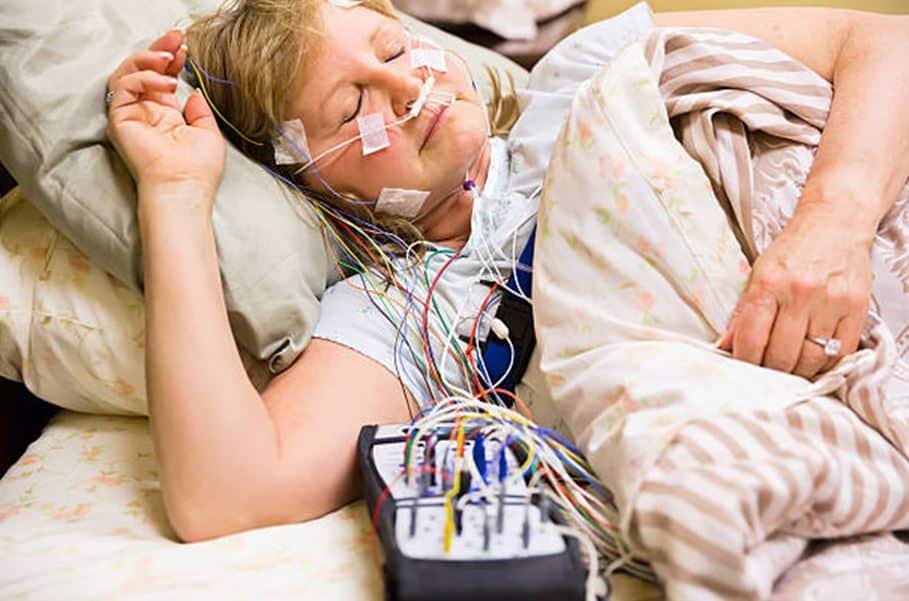Health
Polysomnography: Purpose, Procedure & Risks

Polysomnography (PSG) is a study or test that is performed while you are completely asleep. The best neurology hospitals in Bangalore will monitor you while you sleep, collect data on your sleep patterns, and diagnose any sleep abnormalities.
A sleep study records your body’s transitions between the stages of sleep, which are rapid eye movement (REM) sleep and non-REM sleep. Non-REM sleep is separated into two stages: “light sleep” and “deep sleep.” Your brain activity is intense during REM sleep, but only your eyes and breathing muscles are active.
This is the stage at which you fantasize. Non-REM sleep is associated with slower brain activity. A person who does not have a sleep problem will alternate between non-REM and REM sleep, resulting in numerous sleep cycles every night.
Observing your sleep cycles, as well as your body’s reactions to variations in these cycles, can aid in the detection of disruptions in your sleep habits. Polysomnography is usually performed at a specialized sleep center or a large hospital.
Your visit will begin in the evening, around 2 hours before your regular bedtime. You will spend the night in the sleep center, where you will sleep in a private room. You are welcome to bring everything you need for your evening routine, as well as your clothing.
The polysomnography will be administered by a technician who will watch you while you sleep. The technician can see and hear what is going on within your room. During the night, you will be able to hear and speak with the technician.
During the polysomnography, the technician will take the following measurements:
- waves in the brain
- motions of the eyes
- the action of the skeletal muscles
- pace and rhythm of the heart
- the level of blood pressure
- blood oxygen saturation
- breathing patterns, such as absences or pauses in breathing,
- position of the body
- movement of the limb
- snoring and other sounds
To collect this information, the technician will stick small sensors known as “electrodes” to your:
- scalp
- temples
- chest
- legs
The sensors contain sticky patches that allow them to adhere to your skin as you sleep. Elastic bands over your chest and stomach will record your breathing patterns and chest motions. A little clip on your finger will measure the oxygen level in your blood.
The sensors are connected to thin, flexible cables that transmit data to a computer. In specific sleep clinics, the technician will set up equipment to record a video. This will allow you and your doctor to discuss the changes in your positioning throughout the night.
Polysomnography is painless and non-invasive; therefore, it poses few hazards. The adhesive that holds the electrodes to your skin may cause minor skin discomfort. The findings of your PSG may take up to three weeks to arrive.
A technician will assemble the data from the night of your sleep study to graph your sleep cycles. A doctor at the sleep center will analyze this information and your medical history and sleep history to make a diagnosis. If your polysomnography findings are abnormal, it could mean that you have one of the following sleep-related illnesses:
- Obstructive sleep apnea or other breathing problems
- Disorders associated with seizures
- Other movement disorders, such as periodic limb movement disorder
- Narcolepsy or other causes of unusual daytime tiredness
If you are diagnosed with a sleep disorder, the best neurology hospitals in Bangalore will go over your treatment choices with you.
Read more: How Family Nurse Practitioners Contribute To Healthcare
-

 Games2 months ago
Games2 months agoPusoy Strategies for Play That Also Work in Pusoy Dos in English
-

 News2 months ago
News2 months agoCreating Acoustic Comfort in Restaurants: The Overlooked Ingredient of a Perfect Dining Experience
-

 Beauty2 months ago
Beauty2 months agoNatural Beauty in Glass: The Power of Biophotonic Packaging
-

 Finance2 months ago
Finance2 months agoFrom Confusion to Clarity: A Breakdown of the 183-Day Rule






